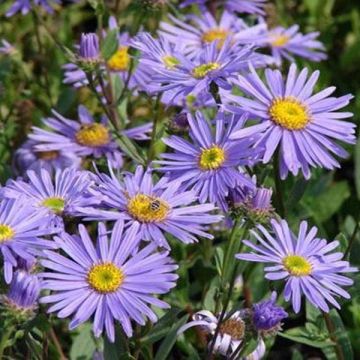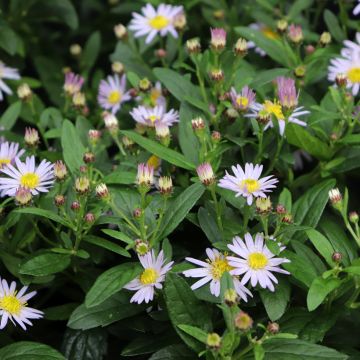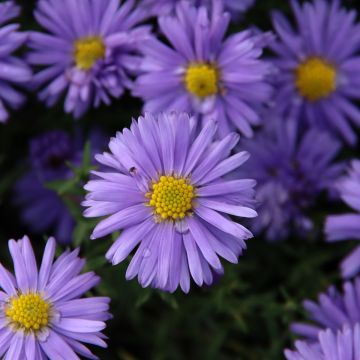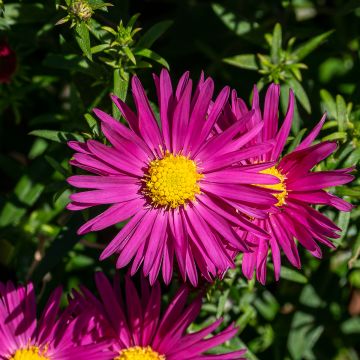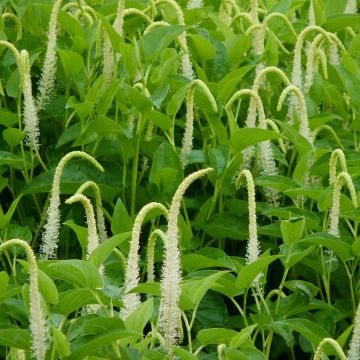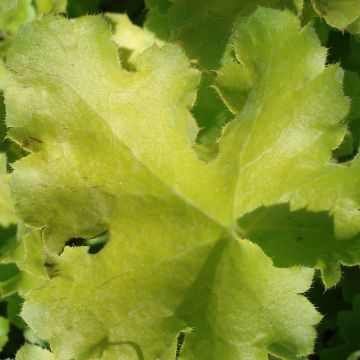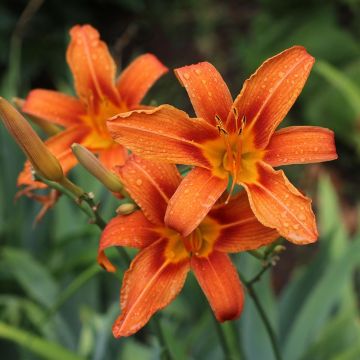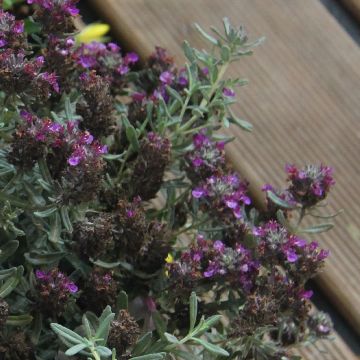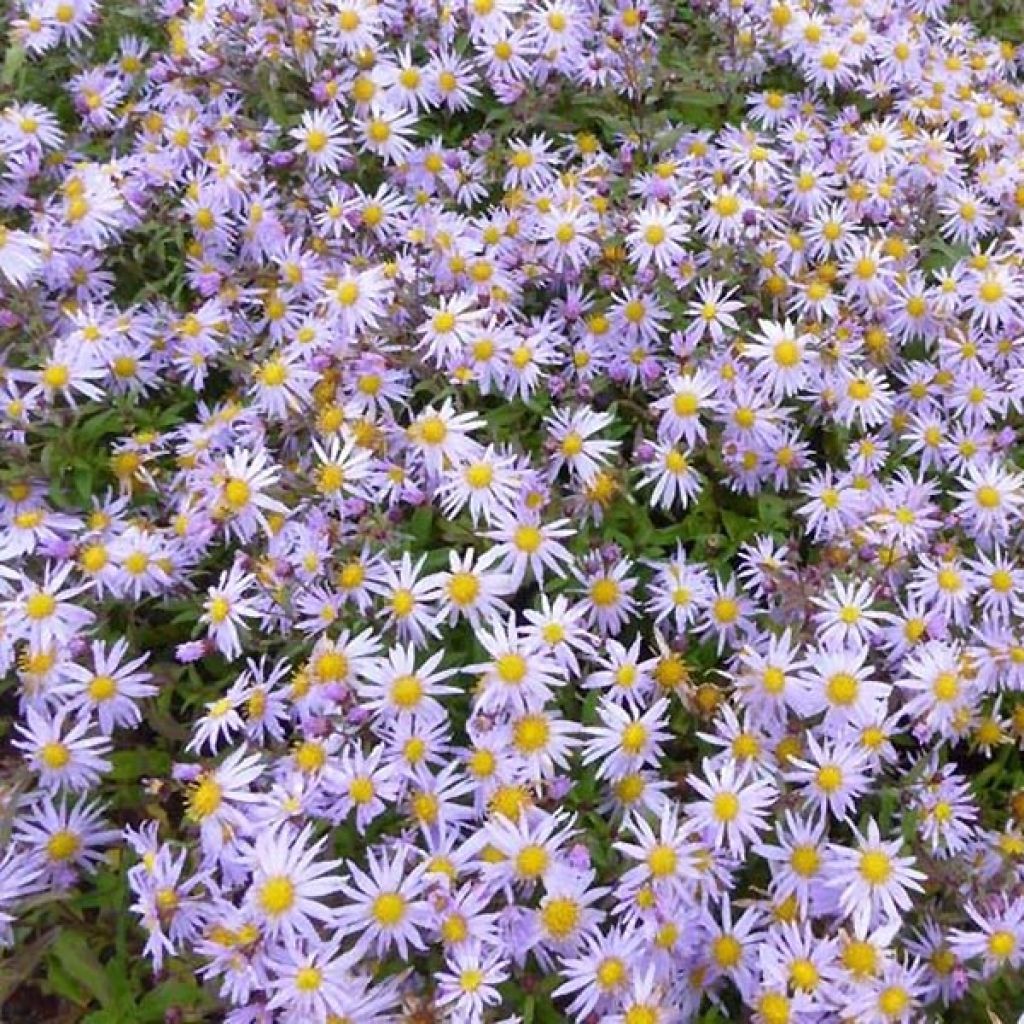

Aster ageratoides Eleven Purple


Aster ageratoides Eleven Purple
Aster ageratoides Eleven Purple
Aster ageratoides Eleven purple
Japanese Aster, White Michaelmas Daisy, Asian Starwort
This item cannot be shipped to the selected country
Delivery charge from €5.90
More information
Schedule delivery date,
and select date in basket
This plant carries a 12 months recovery warranty
More information
We guarantee the quality of our plants for a full growing cycle, and will replace at our expense any plant that fails to recover under normal climatic and planting conditions.
From €5.90 for pickup delivery and €6.90 for home delivery
Express home delivery from €8.90.
Does this plant fit my garden?
Set up your Plantfit profile →
Description
Aster ageratoides 'Eleven Purple' is undoubtedly the best in the category of dwarf autumn asters, as this small plant is robust, floriferous, pleasantly coloured, and beautifully made. This variety forms a small, dense, and tight cushion, with a very regular appearance, which disappears under a dazzling flowering. The beautiful mauve-blue star-shaped flowers with yellow hearts are carried by purple stems. It is a hardy perennial and not very sensitive to powdery mildew. With an indefinable charm, it will become indispensable in a large bed of wildflowers or more sophisticated flowers.
Aster ageratoides is one of the parents of this hybrid variety, selected in Belgium for its incredible floribundity and its compact habit. Like all asters, this perennial belongs to the Asteraceae family. 'Eleven Purple' develops from a sucker stump composed of upright, short, stiff, and tight green-purple stems, carrying slightly rough foliage of a matte green. The adult plant will form a rounded clump 35cm (14in) tall and 30cm (12in) in diameter. From September, countless bouquets of small flowers appear in 3cm (1in) heads, with very fine outer ligules, of a bright mauve-violet shade. The flowers almost smother the foliage. This abundant flowering will only end with the arrival of frost, in October-November depending on the regions. It is a deciduous plant, whose above-ground vegetation dies in winter and regrows in spring.
Plant Aster 'Eleven Purple' in any moist soil that is not too dry. It even accepts poor quality soil, or compact and clayey soils. It cannot compete with other perennials with powerful root systems. In the garden, for example, plant it with perennial geraniums, other dwarf asters, lady's mantle, or light grasses such as Stipa tenuifolia or Muhlenbergia capillaris. It also forms beautiful bright streaks between large rocks in a rock garden. Its abundant and delicate flowering attracts pollinating insects. Its flowering stems are lovely in a vase, in a floral arrangement, in the company of September roses.
The genus offers many species, represented by a multitude of floriferous varieties. There are varieties of all sizes in an extremely rich range of colours. Several species are associated with each season.
Report an error about the product description
Aster ageratoides Eleven Purple in pictures




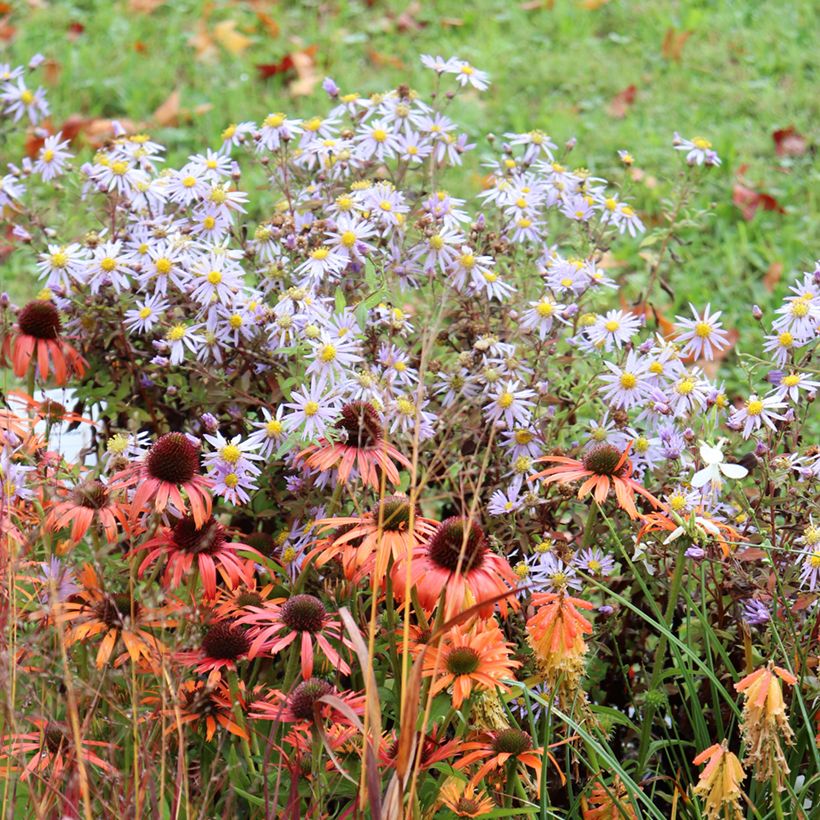

Flowering
Foliage
Plant habit
Botanical data
Aster
ageratoides
Eleven purple
Asteraceae
Japanese Aster, White Michaelmas Daisy, Asian Starwort
Cultivar or hybrid
Other Asters
Planting and care
Plant in any not too dry soil; it even accepts poor quality soil, and compact and clayey soils. If it does adapt to poor and relatively dry soils, it will require fertilisation in April, more frequent watering in summer, and mulching to maintain moisture at its base. In beds, respect a spacing of at least 50cm (20in) between plants. At the end of flowering, prune the clump to 10cm (4in). Divide the clumps every 2 to 3 years to keep vigorous stumps and propagate this wonderful plant throughout the garden.
Plant it in a sunny location that will allow it to express its full potential. Its robust foliage seems resistant to powdery mildew, even in hot weather. Its only requirement is not to compete with other perennials with a strong root system. Prune dry branches in winter.
Planting period
Intended location
Care
-
, onOrder confirmed
Reply from on Promesse de fleurs
Summer flowering perennials
Haven't found what you were looking for?
Hardiness is the lowest winter temperature a plant can endure without suffering serious damage or even dying. However, hardiness is affected by location (a sheltered area, such as a patio), protection (winter cover) and soil type (hardiness is improved by well-drained soil).

Photo Sharing Terms & Conditions
In order to encourage gardeners to interact and share their experiences, Promesse de fleurs offers various media enabling content to be uploaded onto its Site - in particular via the ‘Photo sharing’ module.
The User agrees to refrain from:
- Posting any content that is illegal, prejudicial, insulting, racist, inciteful to hatred, revisionist, contrary to public decency, that infringes on privacy or on the privacy rights of third parties, in particular the publicity rights of persons and goods, intellectual property rights, or the right to privacy.
- Submitting content on behalf of a third party;
- Impersonate the identity of a third party and/or publish any personal information about a third party;
In general, the User undertakes to refrain from any unethical behaviour.
All Content (in particular text, comments, files, images, photos, videos, creative works, etc.), which may be subject to property or intellectual property rights, image or other private rights, shall remain the property of the User, subject to the limited rights granted by the terms of the licence granted by Promesse de fleurs as stated below. Users are at liberty to publish or not to publish such Content on the Site, notably via the ‘Photo Sharing’ facility, and accept that this Content shall be made public and freely accessible, notably on the Internet.
Users further acknowledge, undertake to have ,and guarantee that they hold all necessary rights and permissions to publish such material on the Site, in particular with regard to the legislation in force pertaining to any privacy, property, intellectual property, image, or contractual rights, or rights of any other nature. By publishing such Content on the Site, Users acknowledge accepting full liability as publishers of the Content within the meaning of the law, and grant Promesse de fleurs, free of charge, an inclusive, worldwide licence for the said Content for the entire duration of its publication, including all reproduction, representation, up/downloading, displaying, performing, transmission, and storage rights.
Users also grant permission for their name to be linked to the Content and accept that this link may not always be made available.
By engaging in posting material, Users consent to their Content becoming automatically accessible on the Internet, in particular on other sites and/or blogs and/or web pages of the Promesse de fleurs site, including in particular social pages and the Promesse de fleurs catalogue.
Users may secure the removal of entrusted content free of charge by issuing a simple request via our contact form.
The flowering period indicated on our website applies to countries and regions located in USDA zone 8 (France, the United Kingdom, Ireland, the Netherlands, etc.)
It will vary according to where you live:
- In zones 9 to 10 (Italy, Spain, Greece, etc.), flowering will occur about 2 to 4 weeks earlier.
- In zones 6 to 7 (Germany, Poland, Slovenia, and lower mountainous regions), flowering will be delayed by 2 to 3 weeks.
- In zone 5 (Central Europe, Scandinavia), blooming will be delayed by 3 to 5 weeks.
In temperate climates, pruning of spring-flowering shrubs (forsythia, spireas, etc.) should be done just after flowering.
Pruning of summer-flowering shrubs (Indian Lilac, Perovskia, etc.) can be done in winter or spring.
In cold regions as well as with frost-sensitive plants, avoid pruning too early when severe frosts may still occur.
The planting period indicated on our website applies to countries and regions located in USDA zone 8 (France, United Kingdom, Ireland, Netherlands).
It will vary according to where you live:
- In Mediterranean zones (Marseille, Madrid, Milan, etc.), autumn and winter are the best planting periods.
- In continental zones (Strasbourg, Munich, Vienna, etc.), delay planting by 2 to 3 weeks in spring and bring it forward by 2 to 4 weeks in autumn.
- In mountainous regions (the Alps, Pyrenees, Carpathians, etc.), it is best to plant in late spring (May-June) or late summer (August-September).
The harvesting period indicated on our website applies to countries and regions in USDA zone 8 (France, England, Ireland, the Netherlands).
In colder areas (Scandinavia, Poland, Austria...) fruit and vegetable harvests are likely to be delayed by 3-4 weeks.
In warmer areas (Italy, Spain, Greece, etc.), harvesting will probably take place earlier, depending on weather conditions.
The sowing periods indicated on our website apply to countries and regions within USDA Zone 8 (France, UK, Ireland, Netherlands).
In colder areas (Scandinavia, Poland, Austria...), delay any outdoor sowing by 3-4 weeks, or sow under glass.
In warmer climes (Italy, Spain, Greece, etc.), bring outdoor sowing forward by a few weeks.


































